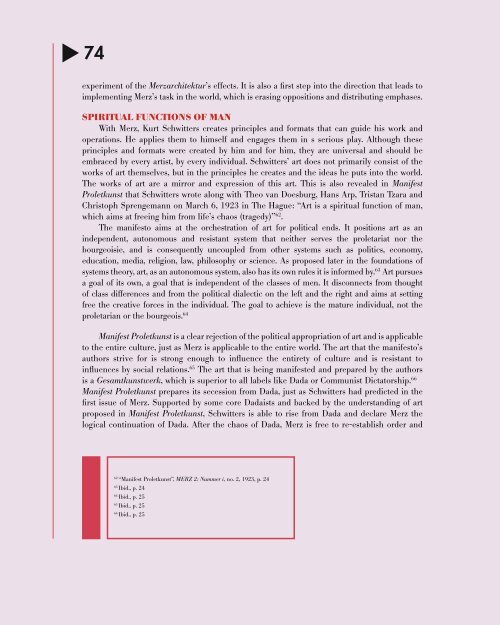Kurt Schwitters: Merz (2016) – Norman Rosenthal interviews Damien Hirst
Fully illustrated catalog published by Galerie Gmurzynska in collaboration with Cabaret Voltaire Zurich on the occasion of Kurt Schwitters: MERZ, a major retrospective exhibition celebrating 100 years of Dada. The exhibition builds and expands on the gallery’s five decade long exhibition history with the artist, featuring exhibition architecture by Zaha Hadid. Edited by Krystyna Gmurzynska and Mathias Rastorfer. First of three planned volumes containing original writings by Kurt Schwitters, historical essays by Ernst Schwitters, Ad Reinhardt and Werner Schmalenbach as well as text contributions by Siegfried Gohr, Adrian Notz, Jonathan Fineberg, Karin Orchard, and Flavin Judd. Foreword by Krystyna Gmurzynska and Mathias Rastorfer. Interview with Damien Hirst conducted by Norman Rosenthal. Includes full color plates and archival photographs. 174 pages, color and b/w illustrations. English. ISBN: 978-3-905792-33-1 The publication includes an Interview with Damien Hirst by Sir Norman Rosenthal about the importance of Kurt Schwitters's practice for Hirst's work.
Fully illustrated catalog published by Galerie Gmurzynska in collaboration with Cabaret Voltaire Zurich on the occasion of Kurt Schwitters: MERZ, a major retrospective exhibition celebrating 100 years of Dada. The exhibition builds and expands on the gallery’s five decade long exhibition history with the artist, featuring exhibition architecture by Zaha Hadid.
Edited by Krystyna Gmurzynska and Mathias Rastorfer.
First of three planned volumes containing original writings by Kurt Schwitters, historical essays by Ernst Schwitters, Ad Reinhardt and Werner Schmalenbach as well as text contributions by Siegfried Gohr, Adrian Notz, Jonathan Fineberg, Karin Orchard, and Flavin Judd.
Foreword by Krystyna Gmurzynska and Mathias Rastorfer.
Interview with Damien Hirst conducted by Norman Rosenthal.
Includes full color plates and archival photographs.
174 pages, color and b/w illustrations.
English.
ISBN:
978-3-905792-33-1
The publication includes an Interview with Damien Hirst by Sir Norman Rosenthal about the importance of Kurt Schwitters's practice for Hirst's work.
You also want an ePaper? Increase the reach of your titles
YUMPU automatically turns print PDFs into web optimized ePapers that Google loves.
t<br />
74<br />
experiment of the <strong>Merz</strong>architektur’s effects. It is also a first step into the direction that leads to<br />
implementing <strong>Merz</strong>’s task in the world, which is erasing oppositions and distributing emphases.<br />
SPIRITUAL FUNCTIONS OF MAN<br />
With <strong>Merz</strong>, <strong>Kurt</strong> <strong>Schwitters</strong> creates principles and formats that can guide his work and<br />
operations. He applies them to himself and engages them in s serious play. Although these<br />
principles and formats were created by him and for him, they are universal and should be<br />
embraced by every artist, by every individual. <strong>Schwitters</strong>’ art does not primarily consist of the<br />
works of art themselves, but in the principles he creates and the ideas he puts into the world.<br />
The works of art are a mirror and expression of this art. This is also revealed in Manifest<br />
Proletkunst that <strong>Schwitters</strong> wrote along with Theo van Doesburg, Hans Arp, Tristan Tzara and<br />
Christoph Sprengemann on March 6, 1923 in The Hague: “Art is a spiritual function of man,<br />
which aims at freeing him from life’s chaos (tragedy)” 62 .<br />
The manifesto aims at the orchestration of art for political ends. It positions art as an<br />
independent, autonomous and resistant system that neither serves the proletariat nor the<br />
bourgeoisie, and is consequently uncoupled from other systems such as politics, economy,<br />
education, media, religion, law, philosophy or science. As proposed later in the foundations of<br />
systems theory, art, as an autonomous system, also has its own rules it is informed by. 63 Art pursues<br />
a goal of its own, a goal that is independent of the classes of men. It disconnects from thought<br />
of class differences and from the political dialectic on the left and the right and aims at setting<br />
free the creative forces in the individual. The goal to achieve is the mature individual, not the<br />
proletarian or the bourgeois. 64<br />
Manifest Proletkunst is a clear rejection of the political appropriation of art and is applicable<br />
to the entire culture, just as <strong>Merz</strong> is applicable to the entire world. The art that the manifesto’s<br />
authors strive for is strong enough to influence the entirety of culture and is resistant to<br />
influences by social relations. 65 The art that is being manifested and prepared by the authors<br />
is a Gesamtkunstwerk, which is superior to all labels like Dada or Communist Dictatorship. 66<br />
Manifest Proletkunst prepares its secession from Dada, just as <strong>Schwitters</strong> had predicted in the<br />
first issue of <strong>Merz</strong>. Supported by some core Dadaists and backed by the understanding of art<br />
proposed in Manifest Proletkunst, <strong>Schwitters</strong> is able to rise from Dada and declare <strong>Merz</strong> the<br />
logical continuation of Dada. After the chaos of Dada, <strong>Merz</strong> is free to re-establish order and<br />
62<br />
“Manifest Proletkunst”, MERZ 2: Nummer i, no. 2, 1923, p. 24<br />
63<br />
Ibid., p. 24<br />
64<br />
Ibid., p. 25<br />
65<br />
Ibid., p. 25<br />
66<br />
Ibid., p. 25

















